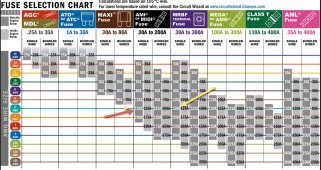Hedges
I See Electromagnetic Fields!
- Joined
- Mar 28, 2020
- Messages
- 20,528
A disconnect has two studs, more opportunities to short out the battery.
I could see having disconnect first, but only in a configuration such that shorting to its terminals is virtually impossible.
When replacing a fuse, you would like neither terminal hot, so short by wrench handle isn't a problem. Disconnecting negative side of battery is one approach.
For grid AC wiring, of course a disconnect comes before fuse. Although, I could imagine a touch-safe fuse holder coming first.
For batteries, "MRBF" fuses bolted directly to battery terminal are available. Obviously, that is before any disconnect.
I could see having disconnect first, but only in a configuration such that shorting to its terminals is virtually impossible.
When replacing a fuse, you would like neither terminal hot, so short by wrench handle isn't a problem. Disconnecting negative side of battery is one approach.
For grid AC wiring, of course a disconnect comes before fuse. Although, I could imagine a touch-safe fuse holder coming first.
For batteries, "MRBF" fuses bolted directly to battery terminal are available. Obviously, that is before any disconnect.






